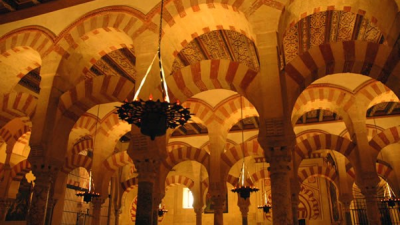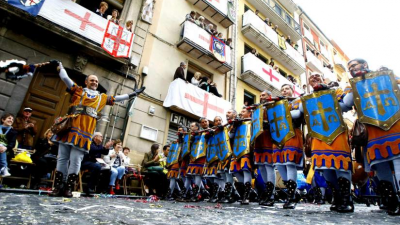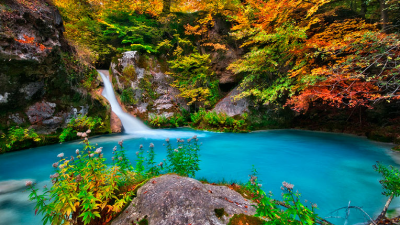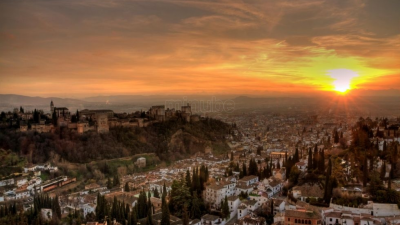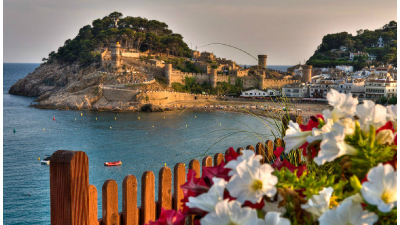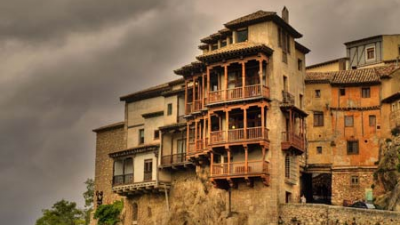The best cathedrals in Spain
|
NEWS
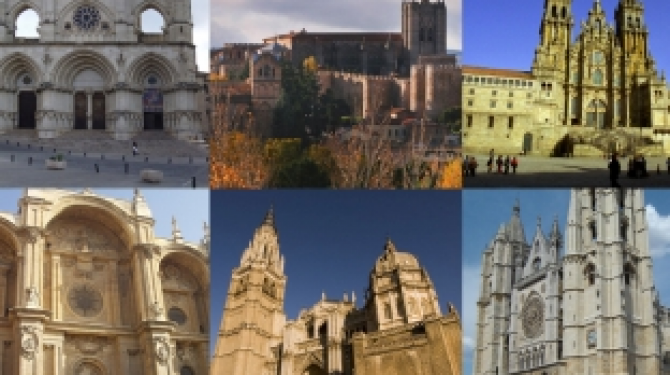
Source: listas.20minutos.es
I am looking for the best cathedral in Spain and I need your help. You just have to choose between the options that I put on the List and Vote for your Favorites ...
TOP 60:
Holy Spirit Cathedral of Tarrasa
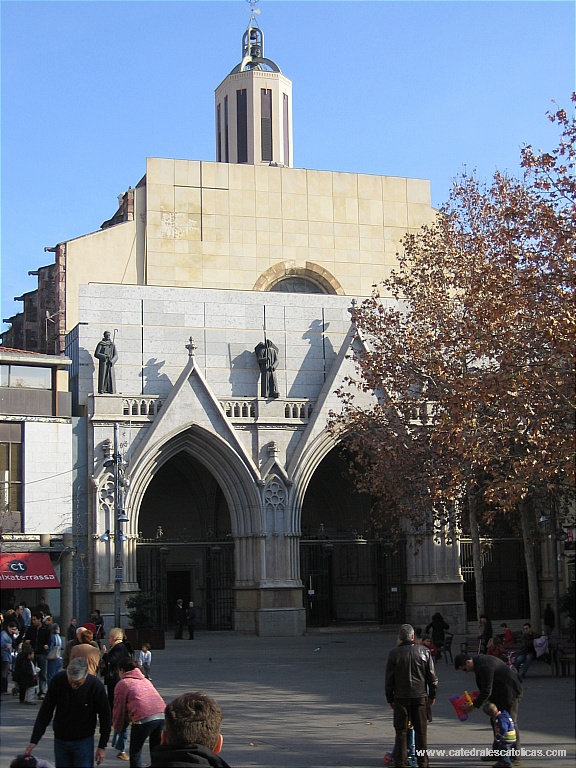
The cathedral of Tarrasa is a religious building located in the Old Square of Tarrasa, it is dedicated to the Holy Spirit. In 2004 the Holy See created the new Diocese of Tarrasa, separating it from the Diocese of Barcelona and deciding that the basilica of the Holy Spirit be its cathedral. The old bishopric of Ègara that had already existed between the 5th and 8th centuries that was dissolved as a result of the Saracen invasion was recovered and was based on the monumental complex of the churches of San Pedro (San Pedro, San Miguel and Santa María ). precisely the parish of San Pedro was transferred to that of the Holy Spirit when the new basilica was built between the 16th and 17th centuries.
TOP 59:
Cathedral of San Feliú de Llobregat
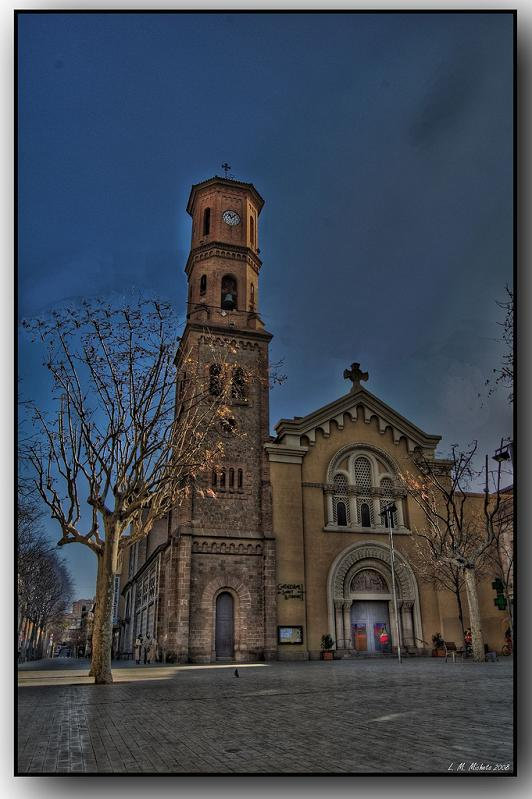
The Cathedral Church of San Lorenzo is a religious building located in the Plaza de la Villa de San Feliú de Llobregat (province of Barcelona). The Cathedral of San Feliú de Llobregat is the work of the architect Josep Ros i Ros. The old parish church, a 19th-century work designed by Francesc Renart, was destroyed during July 1936, at the beginning of the Spanish Civil War. Only the bell tower remained from the old temple. In 1939, the first stone of the current building was laid and from 1940, being Lluís Brugaroles pastor and under the direction of the architect Josep Ros, construction work on the new parish church of San Lorenzo began. On June 22, 1941, the present chapel of the Blessed Sacrament was blessed and finally, on May 26, 1946, the bishop of Barcelona Gregorio Modrego presided over the consecration. The completion of the work took place in 1955, with the chapels of Our Lady of Montserrat and the Sacred Heart. Subsequently, the most important reform that was made was the adaptation to the new liturgical guidelines of the Second Vatican Council, at which time the local painter Joan Torres painted the Holy Supper presiding over the current chapel of the Blessed Sacrament. On June 15, 2004, a bull of Pope John Paul II decreed the separation of 9 arciprestazgos from the Archdiocese of Barcelona to create the new bishopric of San Feliú, based in the city of San Feliú de Llobregat. The same bull raised to the rank of cathedral the one that until that moment was the parish church of San Lorenzo.
TOP 58:
Cathedral of the Assumption of Ceuta
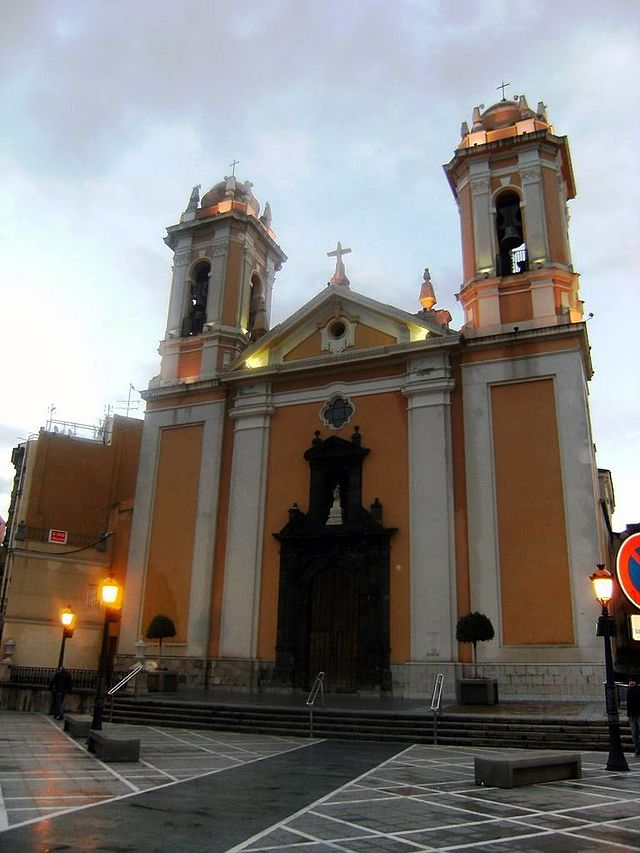
Ceuta Cathedral is located in the space known since Portuguese times as «The City», on a promontory to the southeast of the interfOS area and was built on a mosque from the time of Arab domination (711-1415). During the site of the 30 years was a blood hospital. The testimony of the oldest occupation dates back to the seventh century BC. C., at which time a series of orthogonal plants were built, with varying degrees of complexity, organized around a street. This phase of occupation replaces a previous one, poorly known, characterized by the existence of oval-floor cabins and adobe walls. From that moment until today, the place has been occupied continuously.
TOP 57:
Co-cathedral of Santa María de Vigo
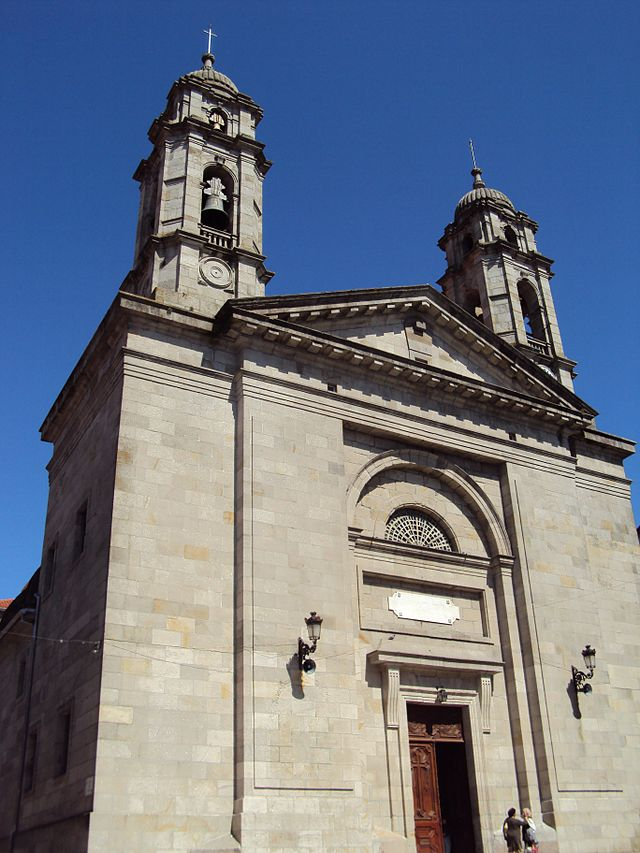
The collegiate church of Santa María or co-cathedral of Vigo is a Catholic temple located in the city of Vigo, in Galicia, Spain. Share the cathedral headquarters of the diocese of Tui-Vigo with the cathedral of Tui. Its construction dates from the early nineteenth century, when it came to replace the old collegiate church, damaged after the explosion of a powder magazine in 1809. The current building was the work of the academic Melchor de Prado y Mariño, of the Royal Academy of San Fernando and is mainly neoclassical style, although the towers are baroque.
TOP 56:
Co-Cathedral of Ferrol
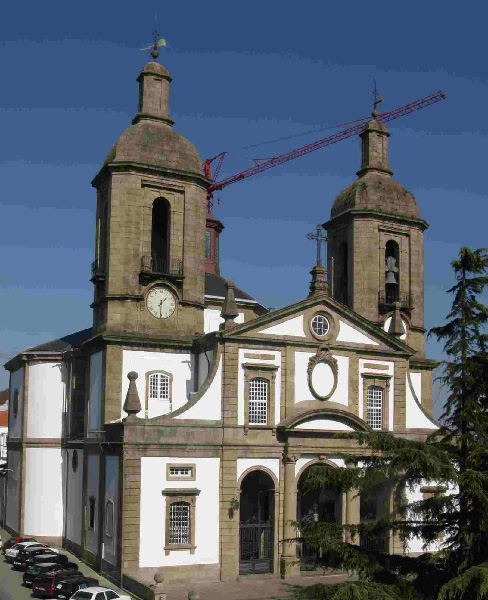
The old Spanish Church of San Julián de Ferrol, by means of John XXIII's bull, reached the category of co-cathedral on March 9, 1959. It did not reach the cathedral because in the same diocese there was already another cathedral, that of Mondoñedo (Lugo). One of its main characteristics is that it does not have a Latin cross plant but a Greek cross plant.
TOP 55:
Calahorra Cathedral
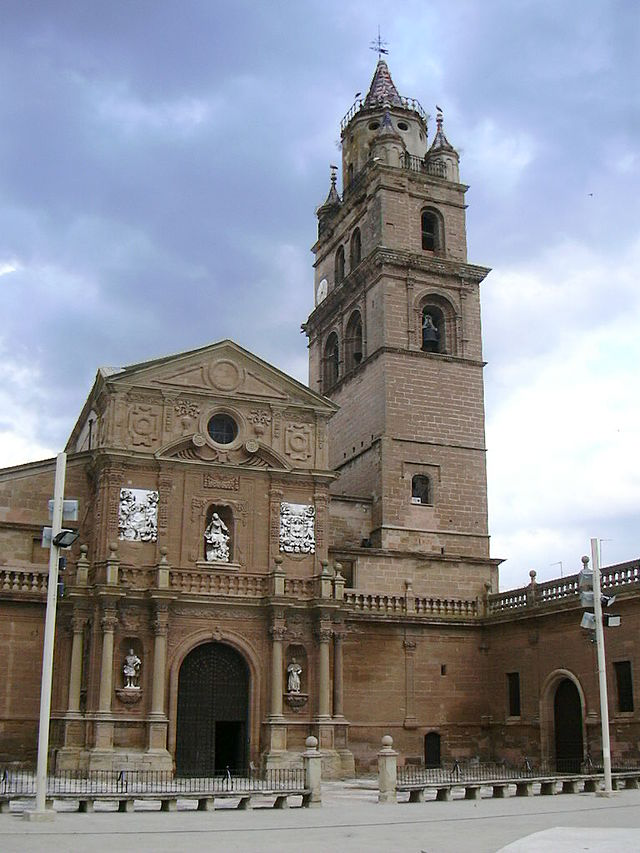
The cathedral of Santa María de Calahorra, La Rioja (Spain), headquarters of the Diocese of Calahorra and La Calzada-Logroño, is a basically Gothic building from the 15th century, of different styles and periods. Raised on the place of martyrdom of the patrons of the city, San Emeterio and San Celedonio, the works began in 1484 and its current construction lasted for two hundred years. It is located in the lower part of the town next to the Cidacos river. Currently, it is considered as BIC (Cultural Interest Asset) (it was declared a historical-artistic monument belonging to the National Artistic Treasury by decree of June 3, 1931).
TOP 54:
Co-cathedral of Santa María de la Redonda
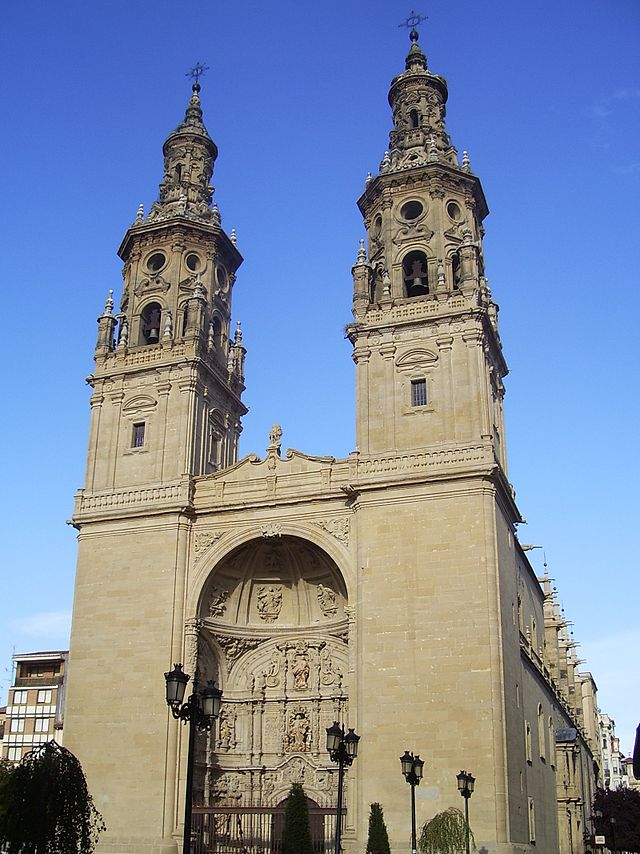
The co-cathedral of Santa María de La Redonda is a church located in Logroño (La Rioja, Spain). Together with the Cathedral of Calahorra and that of Santo Domingo de La Calzada it is the seat of the ecclesiastical diocese of Calahorra and La Calzada-Logroño.
TOP 53:
Orense Cathedral
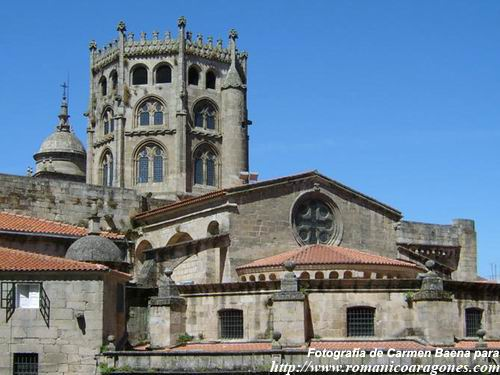
The cathedral of Orense, dedicated to San Martín, is the main religious monument of the city of Orense. It was built between the middle of the twelfth century and the thirteenth advanced. This temple has been honored as a minor basilica since 1867, according to Brief Pontifical of Pope Pius IX, signed on June 30 of that year. Currently, the cathedral is considered as BIC (Cultural Interest Asset) (it was declared a historical-artistic monument belonging to the National Artistic Treasury by decree of June 3, 1931).
TOP 52:
Cathedral of La Magdalena de Getafe
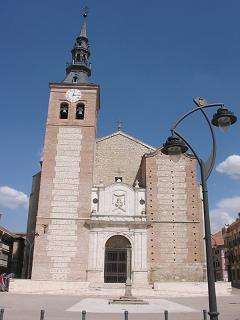
The cathedral of Santa María Magdalena is the cathedral of the city of Getafe and seat of the Diocese of Getafe (Community of Madrid, Spain). The church is located in the Getafe Center neighborhood, specifically in the Plaza de La Magdalena. Its architects were Alonso de Covarrubias and Juan Gómez de Mora. Its construction began in 1549 and was completed in 1770. The predominant styles are the Renaissance, the Baroque and the Mudejar of its tower, corresponding to an earlier temple. He is considered one of the best examples of Renaissance architecture in the Community of Madrid.
TOP 51:
Canary Cathedral
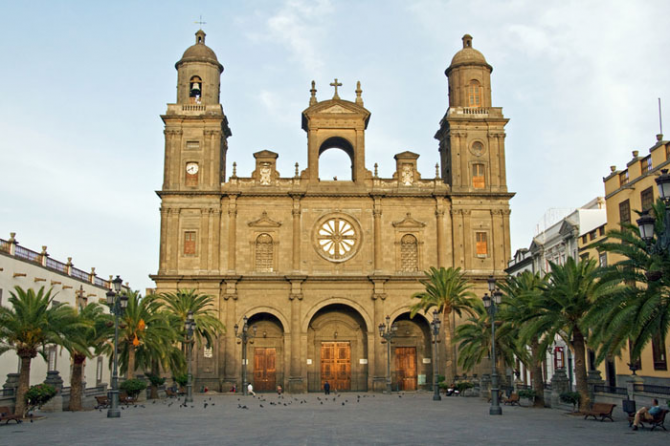
The Holy Cathedral-Basilica Church of the Canary Islands or Cathedral Basilica of Santa Ana is a cathedral, seat of the Diocese of the Canary Islands of the Roman Apostolic Catholic Church, which is located in the historic center of the city of Las Palmas de Gran Canaria, in the Vegueta neighborhood, next to the Plaza Mayor of Santa Ana. It is the headquarters of the diocese of the Canary Islands and every November 26 the celebration of the dedication of this cathedral is celebrated. It is considered the most important monument of Canarian architecture.
TOP 50:
Cathedral of Santa Maria de Lugo
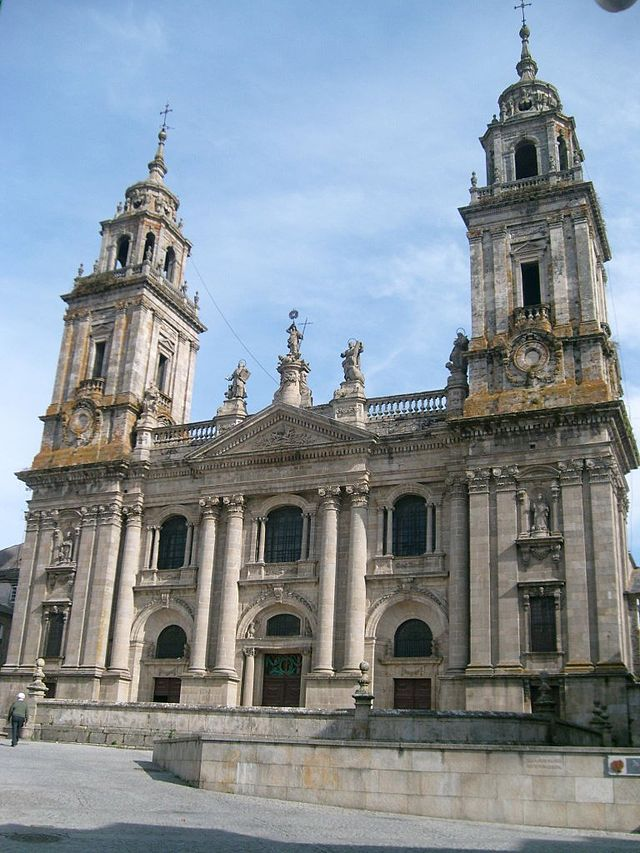
The Cathedral of Santa Maria de Lugo is a Catholic temple, episcopal seat of the diocese of Lugo, located in the city of the same name, in Galicia, Spain.
TOP 49:
Cathedral of San Juan Bautista de Badajoz
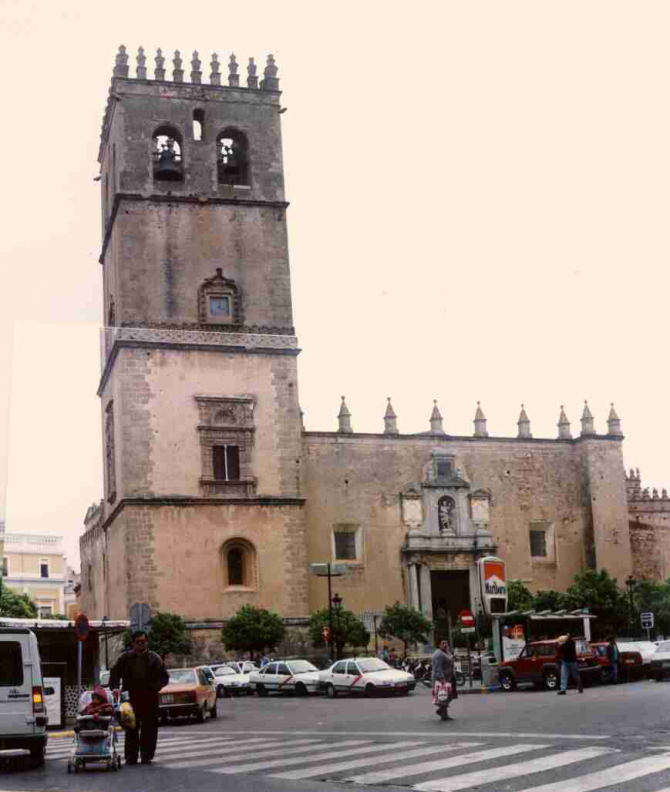
The SI Cathedral of Badajoz (or Cathedral of San Juan Bautista), which has a metropolitan range, is located in the Plaza de España, in the center of Badajoz (Spain). It is the headquarters of the archbishops of Extremadura, forming the archdiocese Mérida-Badajoz.2 It is, together with the cathedrals of Coria and Plasencia, a founding member of the Association of Cathedral Cities, to which fifteen other Spanish cathedrals belong.
TOP 48:
Cathedral of Santa Maria de Tuy
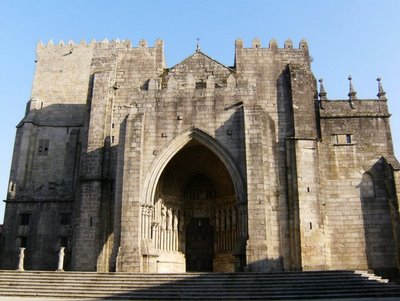
The cathedral of Santa María de Tuy is located in the province of Pontevedra, at its southern end, in the city of Tuy, through which the Miño river passes. Since 1959 he belongs to the Diocese of Tuy-Vigo. The cathedral is the maximum artistic exponent of the city of Tuy, it is located in the highest part of the city in a castro (Tude) on a hill. Its construction began in 1120 and was completed in 1180 in the style of Romanesque architecture, as in most cathedrals, it had important reforms at other times mainly in Gothic style that among other things the main facade dating back to approximately 1225 year.
TOP 47:
Co-cathedral of Santa María la Mayor (Mérida)
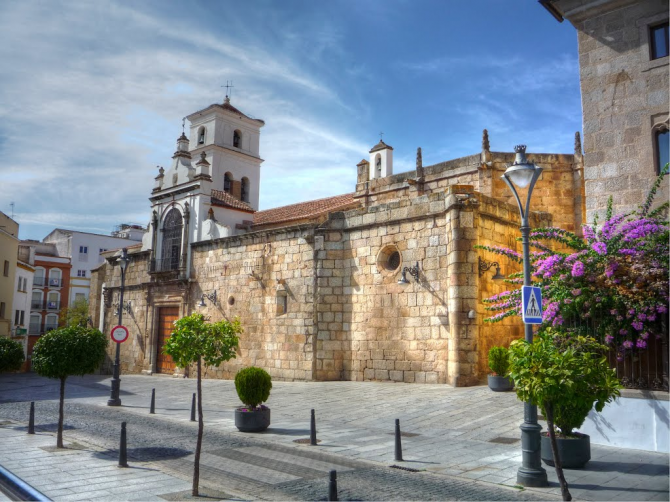
The SI Co-Cathedral of Santa María la Mayor de Mérida, which has a metropolitan rank, stands in the historic heart of the capital of Extremadura. Together with the cathedral temple of Badajoz, it is the seat of the archbishop of the archdiocese of Mérida-Badajoz. Heiress of the ancient Cathedral of Augusta Emeritus, its current appearance begins to forge after the reconquest of the city by King Alfonso IX of León, so its oldest remains correspond to the thirteenth century.
TOP 46:
Mondoñedo Cathedral
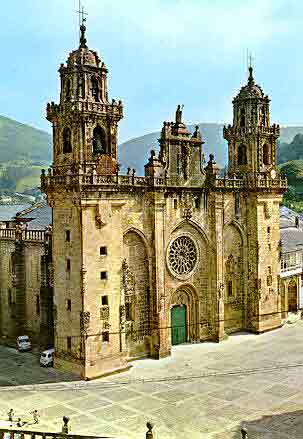
The cathedral of Mondoñedo is, together with the co-cathedral of Ferrol, one of the episcopal headquarters of the diocese of Mondoñedo-Ferrol, in Galicia (Spain). Receive the nickname of the "Kneeling Cathedral" for its perfect proportions and low height. It was declared a National Monument in 1902. Pope John XXIII, by means of a bull dated March 9, 1959, named it a basilica. Inside is the cathedral and diocesan museum "Santos San Cristóbal", founded in 1969, which has important works of religious art, being one of the most important of its kind in Galicia.
TOP 45:
Cathedral of Santa Maria de la Asunción de Coria
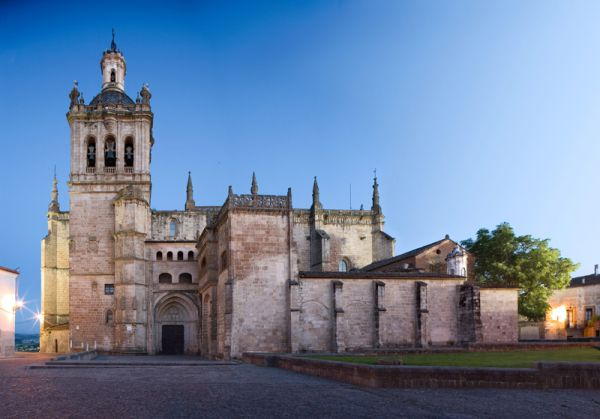
Coria Cathedral is located in Coria, Extremadura, in Spain. Its current construction, located where the old Visigothic cathedral, the city's main mosque and the former Romanesque cathedral-church were located, began in 1498, ending 250 years later, around 1748. The Lisbon earthquake It occurred on November 1, 1755, seriously damaged it. The cathedral is of Gothic transition style, with important Plateresque additions (according to traces of Pedro de Ybarra) and Baroque (Bell tower designed by Manuel de Lara Churriguera). Inside it stores a magnificent collection of painting, sculpture and goldsmithing. Stresses the main altarpiece of the eighteenth century with carvings by Alejandro Carnicero, as well as the episcopal sepulchers of Jiménez de Préxamo by Diego Copín de Holanda, and García de Galarza by Lucas Mitata. The choir must also be mentioned, with a Mudejar walnut stalls from the 15th and 16th centuries, closed by a 16th-century Protorrenacentist fence. Also noteworthy are the gate of the main chapel (16th and 18th centuries) and the altarpieces of the Relics (18th century) and San Pedro de Alcántara (17th century).
TOP 44:
Co-cathedral of San Pedro de Soria
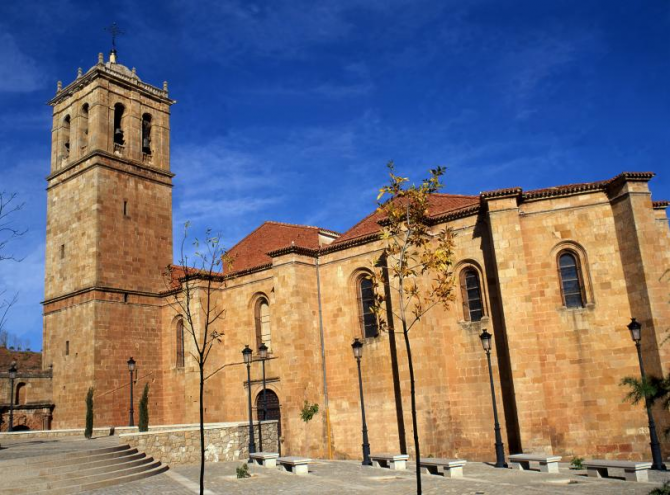
The collegiate church of San Pedro, a true jewel of the Castilian Romanesque architecture that the city of Soria (Spain) has, has also accumulated the title of co-cathedral since 1959, the date from which it shares the cathedral headquarters with El Burgo de Osma.
TOP 43:
Cathedral of Our Lady of the Assumption of Santander
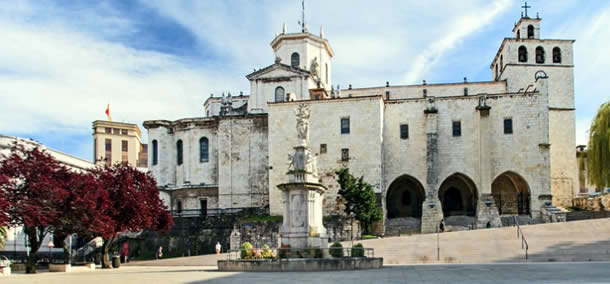
The Cathedral of the Assumption of Our Lady is located in the Spanish city of Santander. Its structure is mainly Gothic, although it has been subsequently expanded and reformed.
TOP 42:
Cathedral of the Holy Children Justo and Pastor of Alcalá de Henares
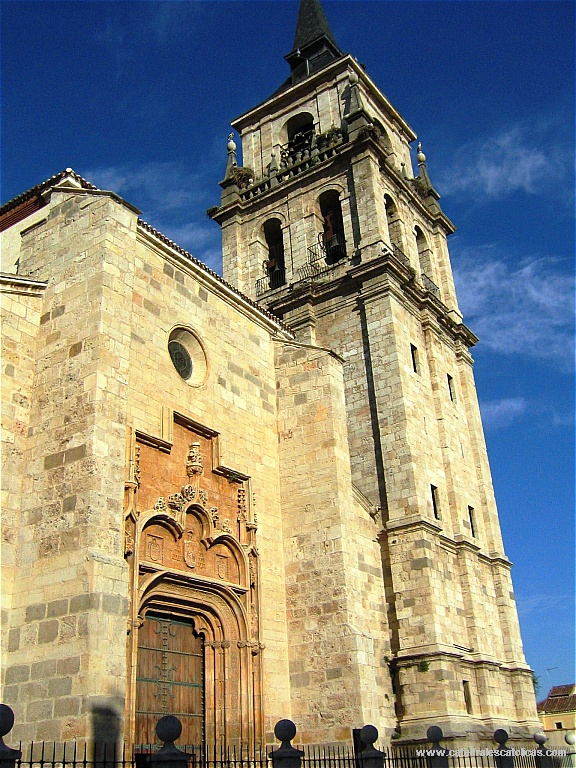
La Santa e Insigne Catedral-Magistral de los Santos Justo y Pastor is the episcopal seat of the Diocese of Alcalá de Henares, and will be located in the city of the same name, in the Community of Madrid, (Spain). It dates from 1514 and presents a marked Elizabethan Gothic style. It is, together with the church of San Pedro de Leuven (Belgium), the only temple in the world that holds the title of Master Church, which meant that all its canons were to be doctors in theology.
TOP 41:
Huelva Cathedral
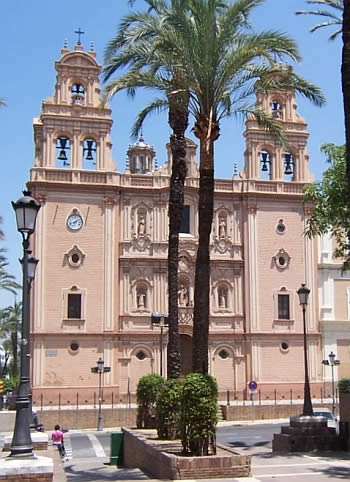
Among all the churches in the city, the parish church of La Merced was chosen, because of its history and physiognomy, as the seat of the town hall and cathedral when the diocese of Huelva of the Archdiocese of Seville was torn off on November 26, 1953. Church premiered as a cathedral in Huelva on March 15, 1954.
TOP 40:
Co-cathedral of Baza
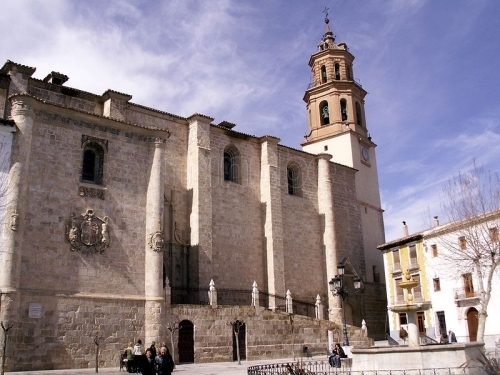
The Collegiate Church of Our Lady Santa María de la Encarnación, Co-Cathedral of Baza or Iglesia Mayor de Baza (Province of Granada, Spain) is a Renaissance-style temple built in the 16th century that was built on the remains of the Muslim Aljama Mosque. Initially, it was opened to Christian worship after its sacralization maintaining its structure as a mosque. It has the rank of co-cathedral of the diocese of Guadix-Baza.
TOP 39:
Co-cathedral of Santa María de Cáceres

The Holy Co-Cathedral Church of Santa María (SIC de Santa María) is the most important Christian temple in the city of Cáceres. José Ramón Mélida indicates that it is the oldest foundation in the city, since it was completed between the fifteenth and sixteenth centuries on a construction of the 13th century in Mudejar ways and wooden roof.
TOP 38:
Cathedral of the Assumption of El Burgo de Osma
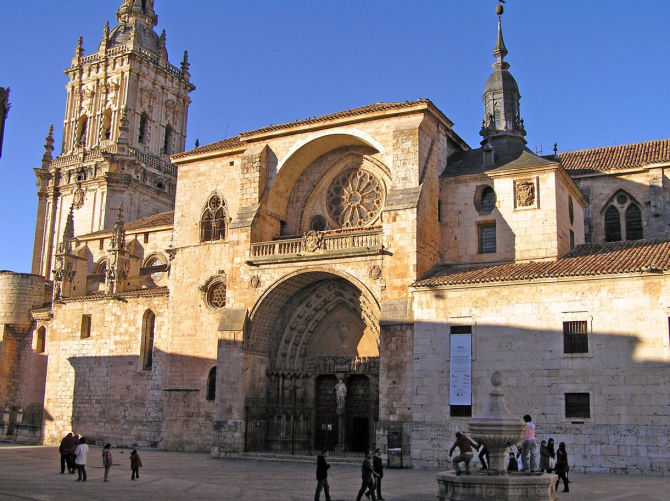
The cathedral of El Burgo de Osma (Soria, Spain) is a Gothic style building that replaced another Romanesque one. Began its construction in 1232, it also shows other stylistic contributions, concluding with the neoclassical (1784). Like many other Spanish cathedrals of the 13th century, it was dedicated to the Assumption of the Virgin. It is the main monument of the town of El Burgo de Osma. The Cathedral Museum, organized in its interior units, stores many important art objects belonging to or linked to the diocese of Osma-Soria. Share the cathedral headquarters with the Co-Cathedral of San Pedro de Soria.
TOP 37:
New Cathedral of Plasencia
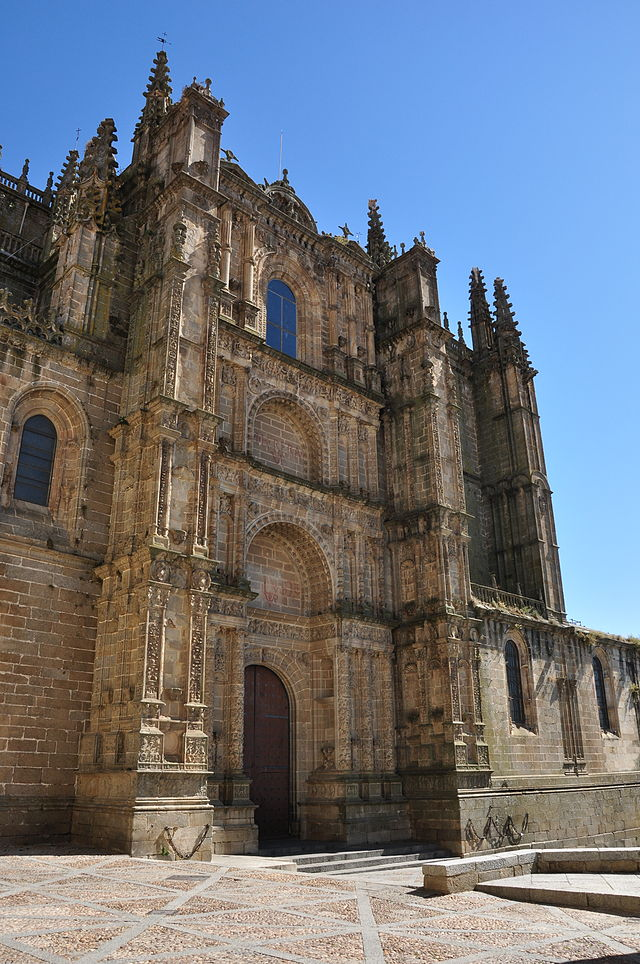
The New Cathedral of Plasencia is located in the city of Plasencia, in the north of Extremadura and is the seat of the Bishopric of the same name. It is the temple with the greatest and richest ornamentation in Extremadura.
TOP 36:
Jerez de la Frontera Cathedral
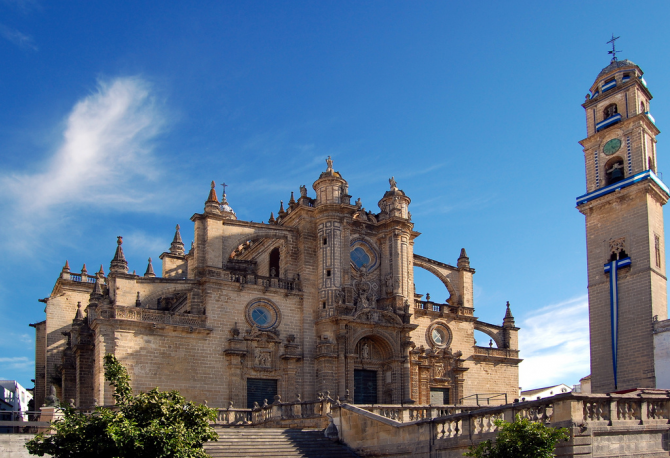
The cathedral of the Diocese of Asidonia-Jerez is located in the city of Jerez de la Frontera (Andalusia, Spain). It is a 17th-century building that combines Gothic, Baroque and Neoclassical styles.
TOP 35:
Cathedral of the Savior of Zaragoza
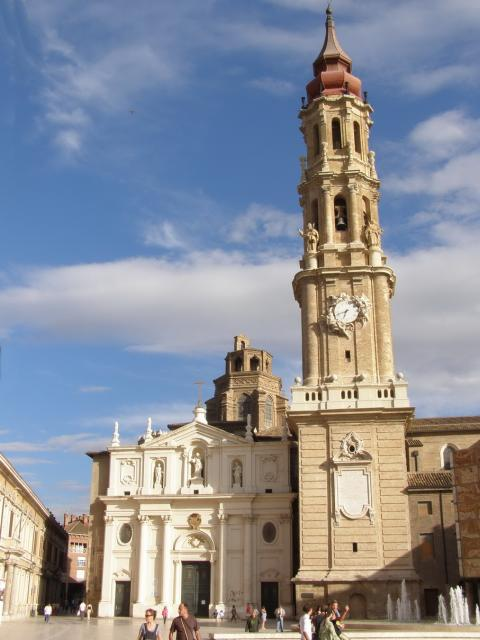
The Cathedral of the Savior in its Epiphany of Zaragoza is one of the two metropolitan cathedrals of Zaragoza, along with the basilica and cathedral of Pilar. It is usually called "the Seo," as opposed to "the Pillar." It is built on the site of the ancient Roman forum of Caesaraugusta and the main mosque of Saraqusta, whose minaret still remains the imprint on the current tower. The building was begun in the 12th century in Romanesque style, integrated into the Aljama Mosque, and has undergone many reforms and extensions until 1704, the year when the Baroque spire was placed topping the tower.
TOP 34:
Cathedral of the Incarnation of Almeria
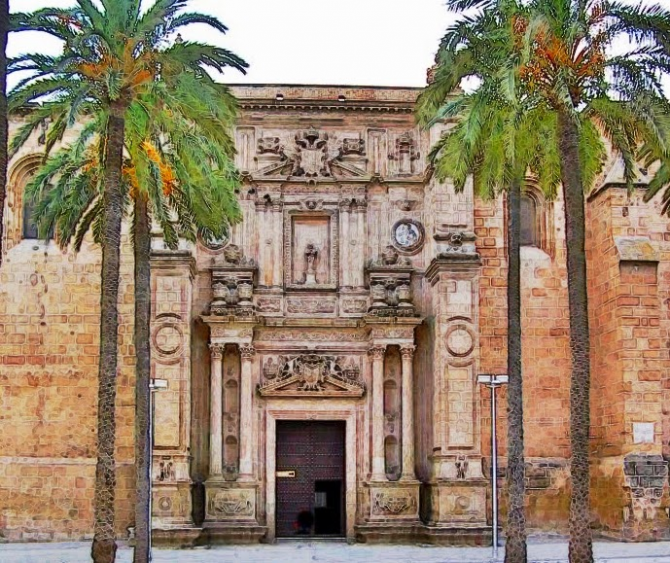
The Cathedral of the Incarnation, in the Spanish city of Almeria, is the episcopal seat of the diocese of Almeria. The building, with a fortress structure, presents a transitional architecture between the late Gothic and the Renaissance, as well as baroque and neoclassical features. Currently, it is considered as BIC (Cultural Interest Asset) (it was declared a historical-artistic monument belonging to the National Artistic Treasury by decree of June 3, 1931).
TOP 33:
Cathedral of Santa María and San Julián de Cuenca
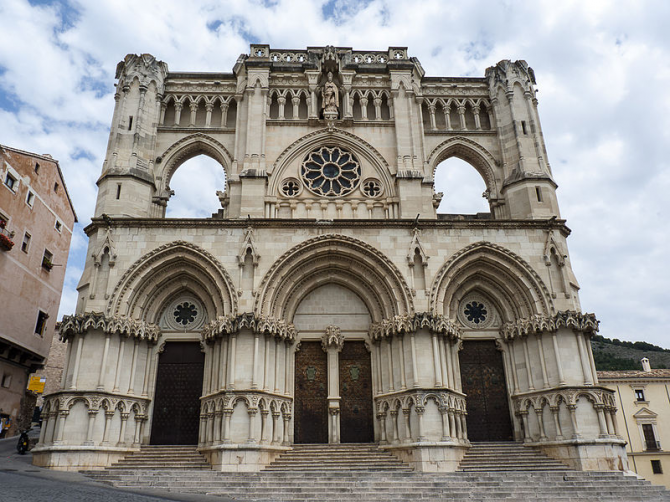
The cathedral of Santa María and San Julián de Cuenca is the main temple of the city and the diocesan seat of the diocese of Cuenca, in the ecclesiastical province of Toledo.
TOP 32:
Cathedral of the Savior of Avila
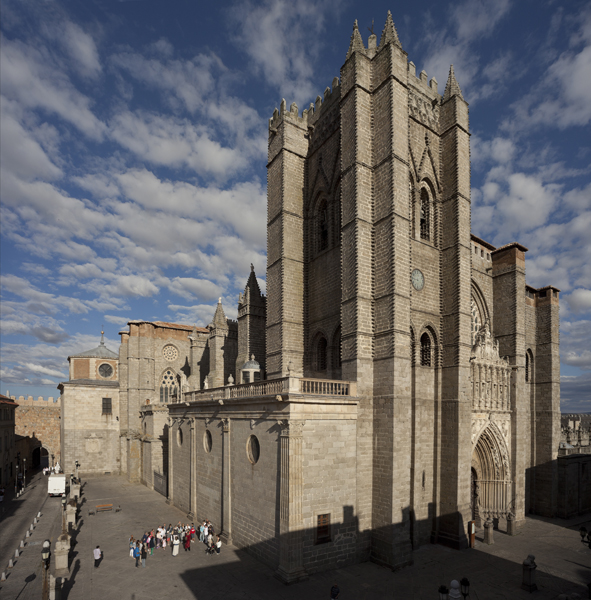
The Cathedral of Christ the Savior of Avila is a temple of Catholic worship in the city of Avila, episcopal seat of the same name, in Castilla y León, Spain. It was designed as a temple and fortress, its apse being one of the cubes of the city wall. It is surrounded by several stately houses or palaces, the most important being the Velada, the Rey Niño and the Valderrábanos, which were assigned the defense of the Gate of the Loyalists or the Weight of the Flour.
TOP 31:
Santa Eulalia Cathedral of Barcelona
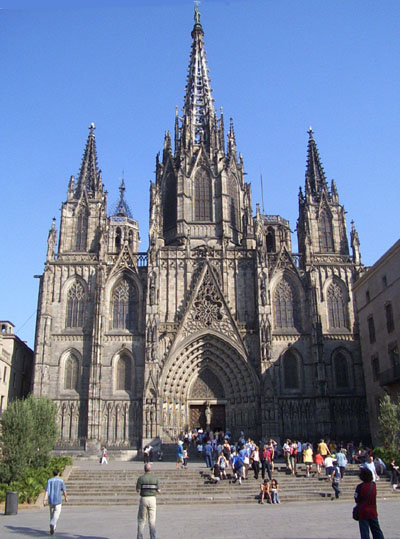
The Holy Cathedral Church Basilica of the Holy Cross and Santa Eulalia is the Gothic cathedral of Barcelona, headquarters of the Archbishopric of Barcelona, in Catalonia, Spain. The current cathedral was built during the thirteenth to fifteenth centuries on the old Romanesque cathedral, built in turn on a church of the Visigothic era that was preceded by a paleochristian basilica, whose remains can be seen in the basement, in the Museum of History of the city. The completion of the imposing facade in the same style, however, is much more modern (19th century). The building is of Cultural Interest and, since November 2, 1929, National Historic-Artistic Monument.
TOP 30:
Cathedral of Santa Maria la Real de la Almudena in Madrid
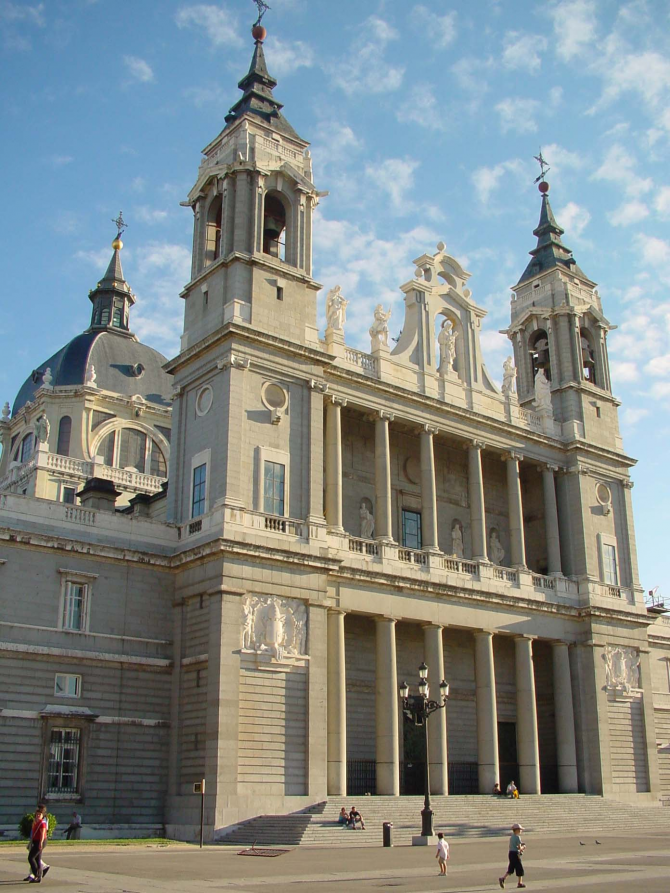
The Holy Cathedral Church of Santa Maria la Real de la Almudena is the episcopal seat of the archdiocese of Madrid, Spain. It is a 102-meter-long, 69-meter-high building, built during the 19th and 20th centuries in a mixture of different styles: neoclassical on the outside, neo-Gothic on the inside and neo-Romanesque on the crypt. It was consecrated by John Paul II on his fourth trip to Spain, on June 15, 1993, thus being the only Spanish cathedral dedicated by a pope. The temple is dedicated to the Virgin Mary, in her invocation of Our Lady of Almudena, patron of the city of Madrid and the Archdiocese of Madrid. The cathedral is located in the historic center of the city. The main facade is in front of the Royal Palace. The facade of the cruise looks towards the street of Bailén, and the access to the crypt is made by the slope of the Vega, at the end of the main street. Unlike most Christian temples, east-west orientation, the cathedral has a north-south orientation, the result of its conception as an integral part of the entire Royal Palace. It is built in stone from Novelda (Alicante) and granite from the quarries of Colmenar Viejo (Madrid).
TOP 29:
Cathedral of San Salvador de Oviedo
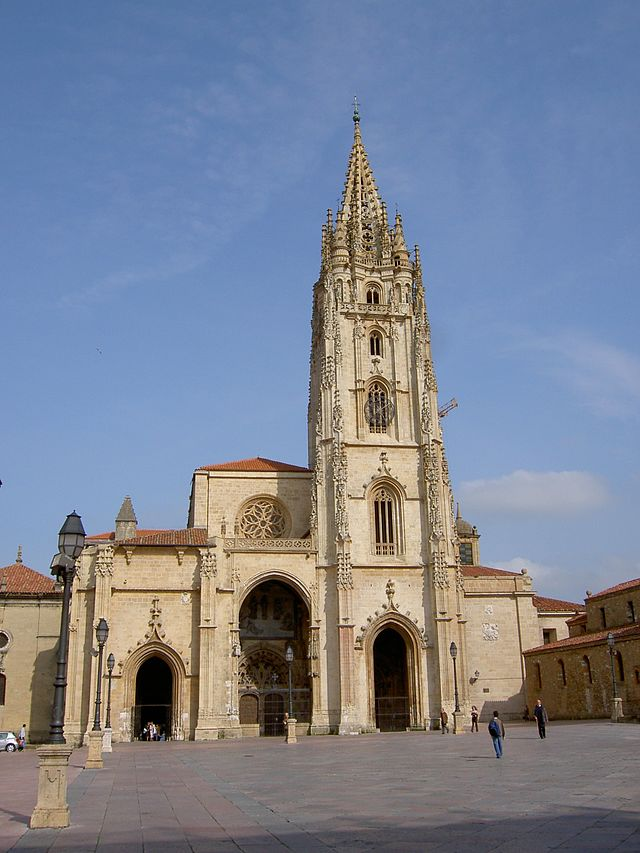
The Holy Basilica Basilica Church of San Salvador de Oviedo is a Gothic-style cathedral located in the city of Oviedo (Principality of Asturias, Spain). It is also known as Sancta Ovetensis, referring to the quality and quantity of the relics that it contains.1 It began to be built at the end of the thirteenth century by the chapter house and the cloister, and its construction lasted for three centuries until the top of the tower In the middle of the 16th century. Later a girala would be added in the seventeenth century in addition to various chapels attached to the aisles. The church is located in the place of the previous pre-Romanesque cathedral complex of the ninth century, some of whose buildings have survived. For this reason and the length of the construction of the current building, it contains pre-Romanesque (Holy Chamber), Romanesque (vaults and apostolate of the Holy Chamber), Renaissance (tower top) and Baroque (Girola, Capilla del Rey Caste and other chapels).
TOP 28:
Murcia Cathedral
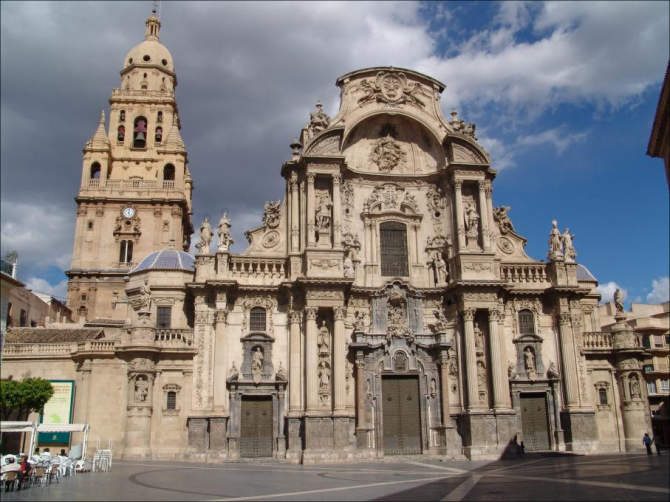
The Holy Cathedral Church of Santa Maria, known as Murcia Cathedral, is the main temple and seat of the Diocese of Cartagena. It is located in the old town of Murcia, in the Plaza Cardenal de Belluga. Consecrated in 1465, it underwent several additions (such as the bell tower) or specific reforms (new chapels or facades) mainly in the 16th and 18th centuries, so it integrates the original Gothic style with Renaissance, Baroque and neoclassical additions. Among its architectural elements, the 93-meter-high tower stands out, making it the third tallest bell tower in Spain - the second if only cathedrals are included; the main facade or imafronte, considered as a masterpiece of the Spanish baroque; and the chapels of Vélez, Junterones and Trascoro. In the Main Chapel is the sepulchral urn where the heart and entrails of Alfonso X the Wise rest.
TOP 27:
Cathedral of San Antolin de Palencia
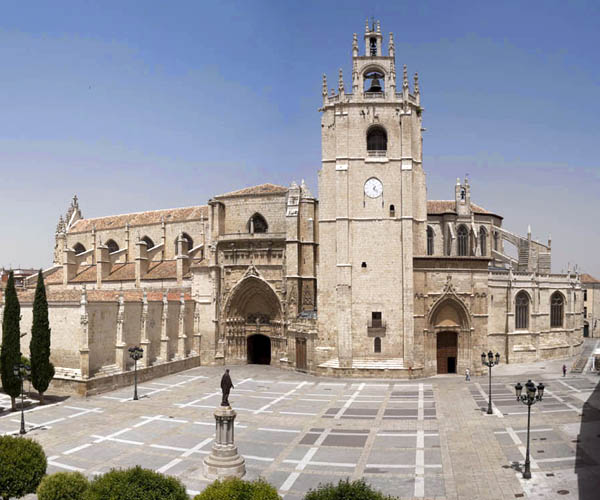
The Holy Cathedral Church Basilica of San Antolin is a temple of Catholic worship, episcopal headquarters of the diocese of Palencia, in the city of the same name, in the autonomous community of Castilla y León, Spain. It is a church of great proportions: 130 meters in length, with a width of 50 meters on the cruise, plus many others in the cloister and chapter hall; the apse brushes 43 meters high. It is dedicated to Saint Antolin Martyr, patron of Palencia, part of whose relics he preserves. It is a predominantly Gothic style building, although it retains previous elements, from the Visigothic and Romanesque period, and Renaissance, Baroque and neoclassical decorative elements. Construction began in the fourteenth century, being the only great Castilian cathedral begun in that century.
TOP 26:
Malaga Cathedral
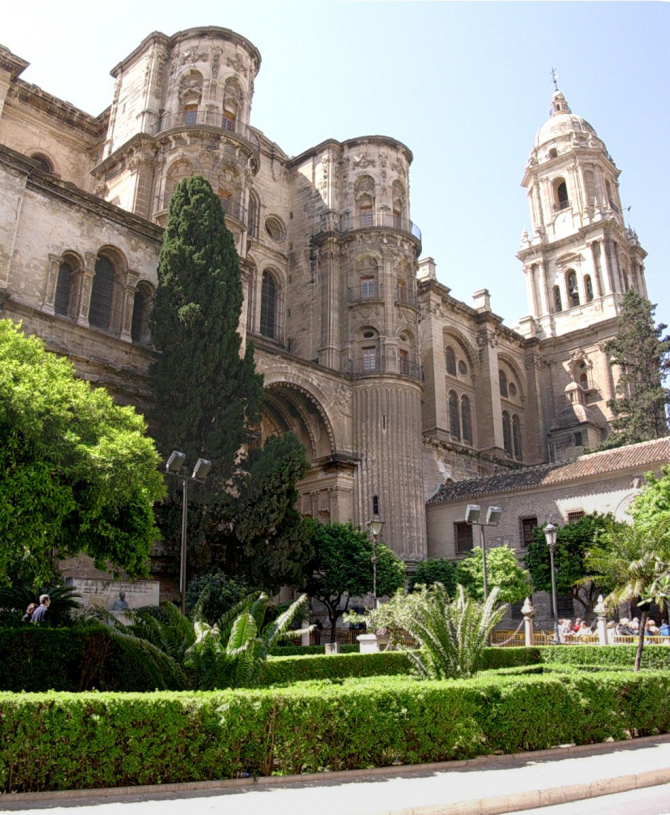
The Holy Cathedral Church Basilica of the Incarnation is the cathedral of Malaga, Spain. Located in front of the Bishop's Square in Malaga, the temple is considered one of the most valuable Renaissance jewels in Andalusia. It is within the limits marked by the disappeared Arab wall on the site of the primitive aljama mosque, the place where the Catholic Monarchs Isabel and Fernando ordered to erect a Christian temple a few days after conquering the city in 1487. It was built between 1528 and 1782. The original traces, in the Gothic style, resulted in a Renaissance project in whose plans Diego de Siloé and Andrés de Vandelvira participated. The cathedral is a synthesis of architectural styles among which the Renaissance prevails over the first Gothic of the old factory and the baroque elements added since the beginning of the 18th century.
TOP 25:
Cathedral of Santa Maria de Palma de Mallorca
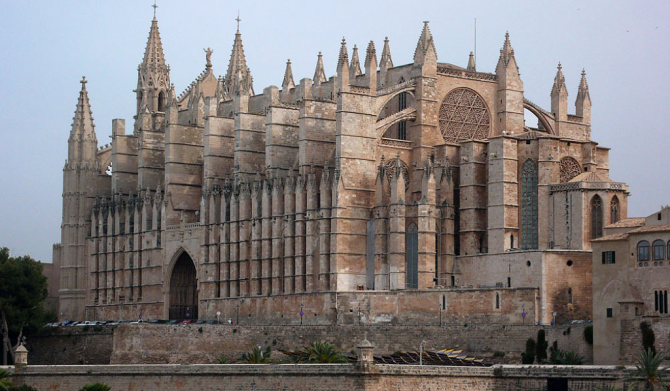
The Cathedral-Basilica of Santa Maria de Palma de Mallorca also called Mallorca Cathedral is the main religious building on the island of Mallorca. In Mallorcan, it is known as La Seu (Seu or Seo is the name given to the cathedrals in the Crown of Aragon). It consists of a Gothic style Levantine temple built on the shore of the bay of Palma. It overlooks the sea on the Roman and Renaissance walls that protected the city, being the only Gothic cathedral that meets this peculiarity. It also consists of the headquarters of the diocese of Mallorca, its holder is the Assumption of Mary.
TOP 24:
Cathedral of Santo Domingo de la Calzada
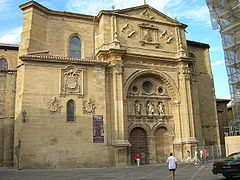
The co-cathedral of Santo Domingo de la Calzada is located in the town of Santo Domingo de la Calzada, in the Autonomous Community of La Rioja, (Spain). Since 1959, he has this title of co-cathedral next to Logroño. The cathedral title is held by the Calahorra cathedral. Currently, it is considered as BIC (Cultural Interest Asset) (it was declared a historical-artistic monument belonging to the National Artistic Treasury by decree of June 3, 1931).
TOP 23:
Cathedral of Santa Maria de Vitoria
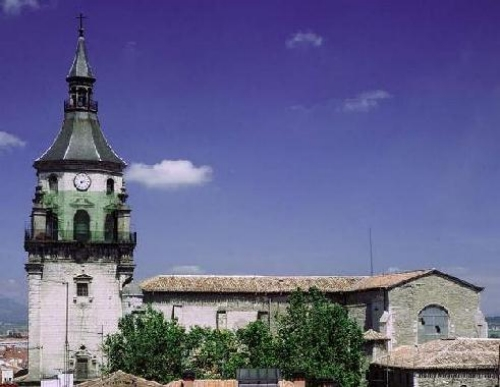
The cathedral of Santa María de Vitoria, popularly known as Catedral Vieja, is a Gothic-style Catholic temple located in the city of Vitoria, capital of the Basque province of Alava in Spain. It is located in the highest part of the hill on which the primitive city was founded, founded in 1181 on the old village of "Gasteiz", with the name of "Nova Victoria", by King Sancho VI of Navarra (Sancho the Sage), and that later gave rise to the current city. With the birth of the diocese of Vitoria in 1862, he acquired the category of cathedral. It is known as the Old Cathedral, to distinguish it from the New Cathedral, dedicated to the Immaculate Conception of Mary and built in the twentieth century in neo-Gothic style. This temple, according to stylistic and formal criteria, is discreet and its relevance is given by its complex construction and its biography full of various avatars linked to the history of the city. Since the end of the 20th century (in 1994 it was closed to the public) it has been the object of a complex and comprehensive restoration plan that has obtained various international awards and has given relevance to the monument
TOP 22:
Cathedral of San Pedro de Jaca
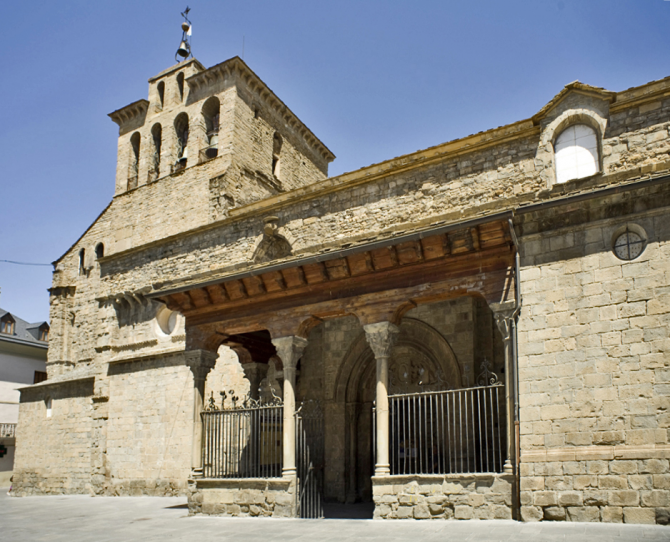
The cathedral of San Pedro de Jaca (province of Huesca, Aragon, Spain), is one of the most characteristic and ancient Romanesque constructions in Spain. It began to be built almost at the same time as that of Santiago de Compostela in the last quarter of the 11th century as the episcopal seat and head of the Kingdom of Aragon on the initiative of King Sancho Ramírez who had obtained the Vatican vassalage after his trip to Rome in 1068, as a result of which the episcopal seat was granted.
TOP 21:
Astorga Cathedral
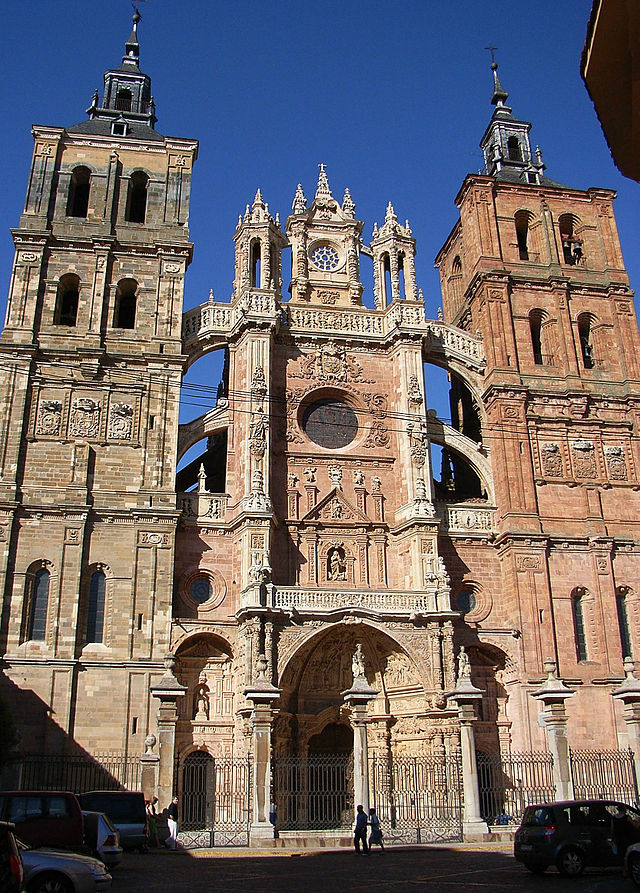
The Cathedral of Astorga, dedicated to Santa Maria, is the episcopal seat of the diocese of Astorga, documented since the third century with the title of Apostolic. It is located in the city of Astorga, province of León. Before the current building there was a pre-Romanesque temple and another of Romanesque style consecrated in the year 1069, which could perhaps be completed in the mid-thirteenth century, without much news of its construction. The current cathedral began to be built by the head in the fifteenth century (1471) in Gothic style (ships and chapels) and continued in the following centuries with the south door and two chapels perpendicular to the nave in Renaissance style and the main facade in Baroque 18th century The Gothic work has possible links with the architects Juan de Colonia and his son Simón de Colonia in regard to the original construction, attributing the work of the 16th century to Rodrigo Gil de Hontañón.
TOP 20:
Zamora Cathedral
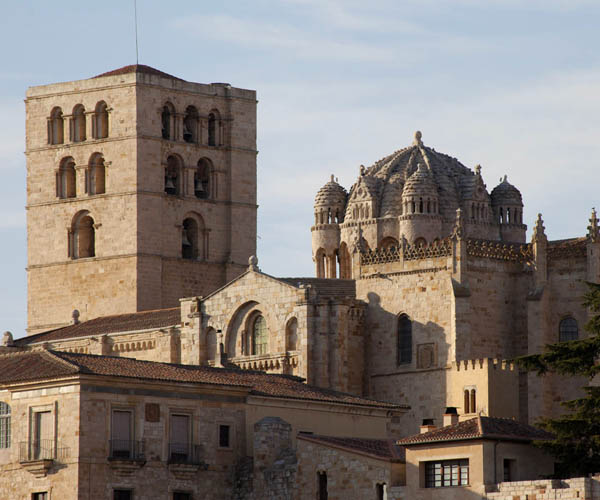
The cathedral of Zamora (Zamora, Spain), dedicated to the Savior, is part of the Romanesque Duero, distinguished by being the smallest and oldest of the eleven in the Community of Castile and Leon. It was declared a National Monument by Royal Order of September 5, 1889. Its plan is a Latin cross with three naves of four sections, the sides with a vaulted edge and the central crucería simple. The three apses it originally had were replaced by a Gothic head in the 16th century. On the cruise there is a dome with a 16-window drum on which stands a dome of gallons coated with stone scales and supported with scallops of clear Byzantine influence. It is the most striking, beautiful and original element of the temple, and a true symbol of the city.
TOP 19:
Cathedral of Santa Maria la Real de Pamplona
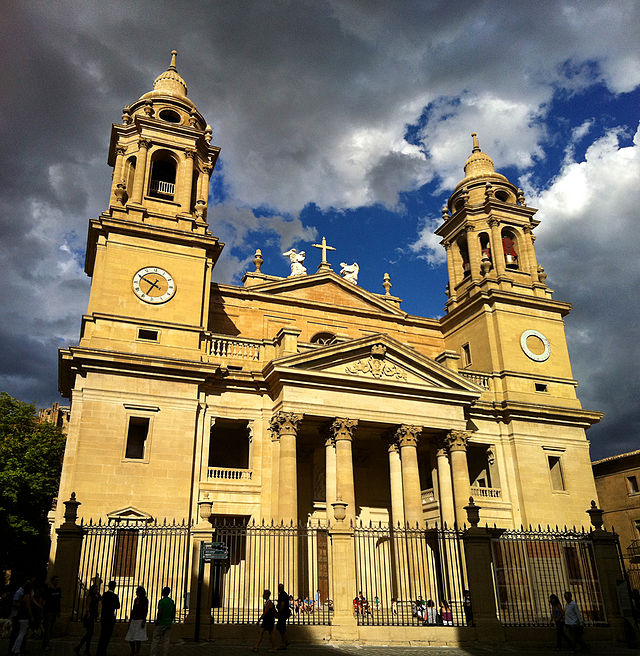
The Cathedral of Santa María la Real de Pamplona, located in the city of Pamplona (Comunidad Foral de Navarra, Spain), headquarters of the Archdiocese of Pamplona and Tudela, is a unique ecclesiastical architectural complex, as it is the most complete cathedral complex Preserves in Spain. It presents the usual buildings in other cathedrals such as church, cloister and sacristies, but also retains the ciliary, refectory, chapter room and bedroom, which are more typical of the common life to which his council was subject and that throughout the centuries They have been demolished in other Spanish cathedrals. The rooms that make it up were built in different periods and styles, retaining today some of the Romanesque dependencies, but predominantly those built in Gothic style (including the church and the cloister) from the 14th to the 16th centuries. The west facade, in neoclassical style, was built at the end of the 18th century.
TOP 18:
Cathedral of the Nativity of Our Lady of Baeza
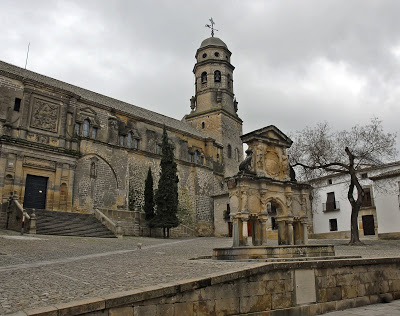
The Cathedral of the Nativity of Our Lady of Baeza (Jaén, Spain) stands, according to historical tradition, on the site of the old main mosque or aljama of the city, consecrated in 1147 for the Christian cult by command of King Alfonso VII under the invocation of San Isidoro. Again, a mosque a short time later, it will not be until King Ferdinand III finally reconquered the city in 1227, when the building is definitively consecrated as a Christian temple with the title of The Nativity of Our Lady. Among the Andalusian cathedrals where Catholic worship is still celebrated, it is the one with the longest historical trajectory. Since 1931, it has been classified as a Site of Cultural Interest with the monument qualification. It is part of the Baeza Renaissance monumental complex, which together with that of Úbeda, was declared a World Heritage Site by Unesco in 2003.
TOP 17:
Cathedral of Mary Immaculate of Vitoria
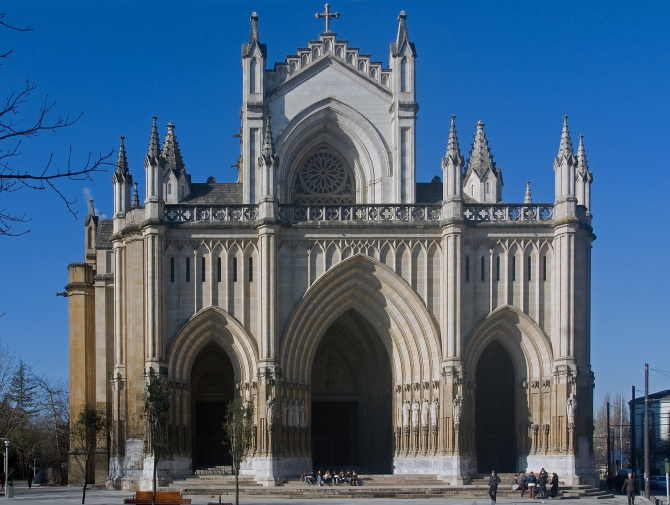
The Parish of Mary Immaculate, misnamed Vitoria Cathedral (Basque Country, Spain) is a Catholic temple located in the central district of Leuven in the capital of Alava. Built in neo-Gothic style in the first half of the twentieth century, its precise invocation is Mary Immaculate Parish, Mother of the Church, although it is popularly known, even without being, as the New Cathedral, a formula used to distinguish it from the oldest and most true Santa María Cathedral, a 13th and 14th century Gothic temple built in the upper part of the city, in turn known as the Old Cathedral. Regular worship is celebrated in the crypt, under the ambulatory, said space functioning as a homonymous parish. The temple, among the most voluminous in Spain, is also the last great professor in the country, although it is an incomplete construction, since the lack of funding left without making a series of architectural elements that would have resulted in a church of very vertical layout, instead of the horizontality resulting from the breach of the original project, and with a much more ornate decoration. Its main value lies in the sculptural wealth, in many cases corresponding to the modernist style, which adorns the cloths of the ships and the apse on the outside, as well as the chapels of the ambulatory, the transcoro and the crypt inside.
TOP 16:
Cathedral of Santa Maria de Tudela
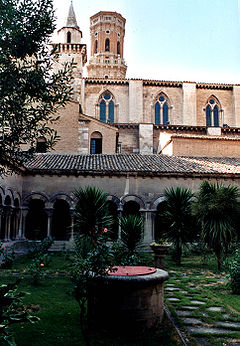
The cathedral of Santa María (Santa María la Mayor) of Tudela (Navarra) is a large Cistercian late-Romanesque temple, which began to be built at the end of the 12th century during the reign of Sancho VI the Wise, passing the witness to his son Sancho VII the Fort, which in turn passed it to his nephew Teobaldo I. He used some of the foundations of the Great Mosque of Tudela (IX to XI centuries). As the orientations of the two temples did not coincide, the mosque was destroyed to build the new temple and only some of its foundations were used. Now it is situated between the current Plaza Vieja and the Roso, Portal and Horno Higuera streets of the Old Town of Tudela. Initially it served as a collegiate church, becoming a cathedral when in the 18th century Tudela separated from the diocese of neighboring Tarazona. It was elevated to the dignity of the cathedral by Pius VI, at the request of Carlos III, in the 18th century.
TOP 15:
Cathedral of Santa Maria de Toledo
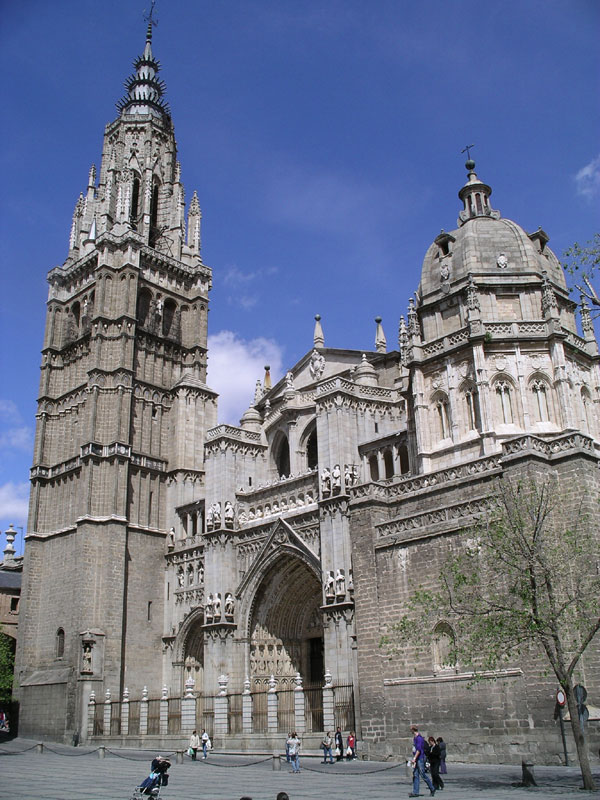
The cathedral of Santa María de Toledo, (Spain), also called Primada Cathedral of Spain, headquarters of the Archdiocese of Toledo, is a building of Gothic architecture, considered by some to be the magna opera of the Gothic style in Spain. Its construction began in 1226 under the reign of Ferdinand III the Saint and the last Gothic contributions were given in the fifteenth century when in 1493 the vaults of the feet of the central nave were closed, during the time of the Catholic Monarchs. It is built with white stone from Olihuelas (in the term of Olías del Rey). It is popularly known as Dives Toletana (with the meaning of the rich Toledo).
TOP 14:
Cathedral-Basilica of Our Lady of Pilar de Zaragoza
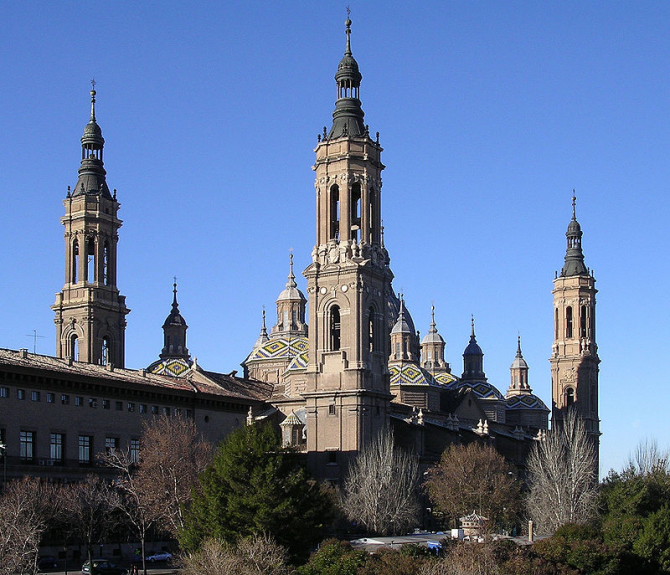
The Cathedral-Basilica of Our Lady of Pilar de Zaragoza It is an important baroque temple of Spain. According to tradition, it is the first Marian temple of Christianity, since it retains and venerates the pillar - in fact, a jasper column - which, according to tradition, was put by the Virgin Mary who, still living in Jerusalem would have appeared in mortal flesh to the apostle James on January 2 of the year 40. Documentary there is no evidence of what is recorded in the tradition, whose details date from 1297 - in a bull of Pope Boniface VIII - and 1299 - a statement of the Jury of Zaragoza—, where for the first time the invocation of “Santa María del Pilar” is witnessed, after undertaking Bishop Hugo de Mataplana in 1293 a rehabilitation of the building that threatened to ruin, thanks to the donations propitiated by the papal bull mentioned
TOP 13:
New Cathedral of Salamanca
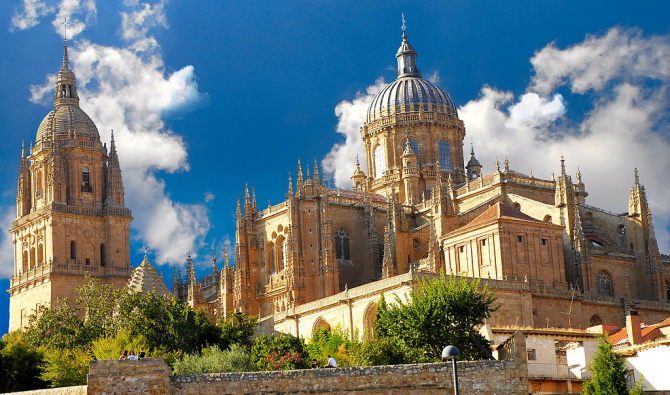
The Cathedral of the Assumption of the Virgin, popularly called New Cathedral, is one of the two cathedrals of the city of Salamanca, in Spain, next to the Old Cathedral. It is the seat of the Diocese of Salamanca. It was built between the 16th and 18th centuries, mixing the late Gothic, Renaissance and Baroque styles. It also has a bell tower that is the second in height among those of the Spanish cathedrals, with 110 meters
TOP 12:
Cathedral of Santa Maria de Valencia
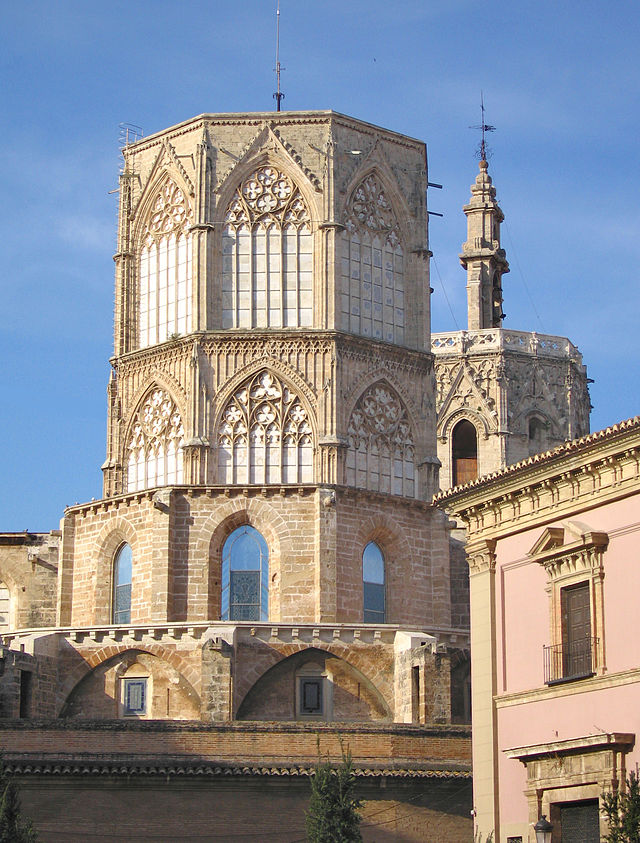
The Metropolitan Cathedral-Basilica Church of the Assumption of Our Lady of Valencia, popularly called La Seu in Valencian, is the seat of the archbishopric of Valencia and is dedicated at the request of Jaime I - following the tradition of the 13th century - to the Assumption of Mary. It was consecrated in 1238 by the first bishop of Valencia after the Reconquest, Fray Andrés de Albalat. It is located on the old mosque of Balansiya, which had risen above the old Visigothic cathedral, built on an ancient Roman temple dedicated to Jupiter or Diana, from which even today the columns can be seen standing in the Almoina museum, next to the Cathedral.
TOP 11:
Cathedral of Santa Maria de Segovia
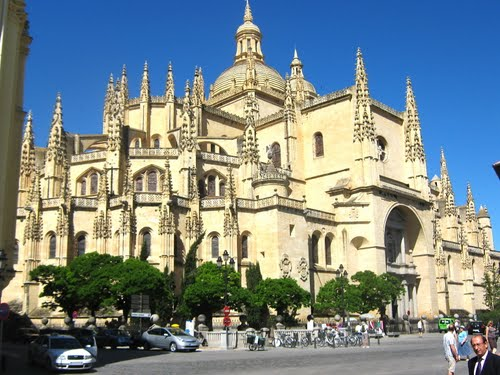
The Holy Cathedral Church of Our Lady of the Assumption and of San Frutos de Segovia, known as the Lady of the Cathedrals for its size and elegance, is a cathedral built between the 16th and 18th centuries, in Gothic style with some Renaissance features. The cathedral of Segovia is one of the latest Gothic cathedrals in Spain and Europe, erected in the 16th century (1525-1577), when Renaissance architecture was spread throughout most of Europe.
TOP 10:
Cathedral of the Good Shepherd of San Sebastián
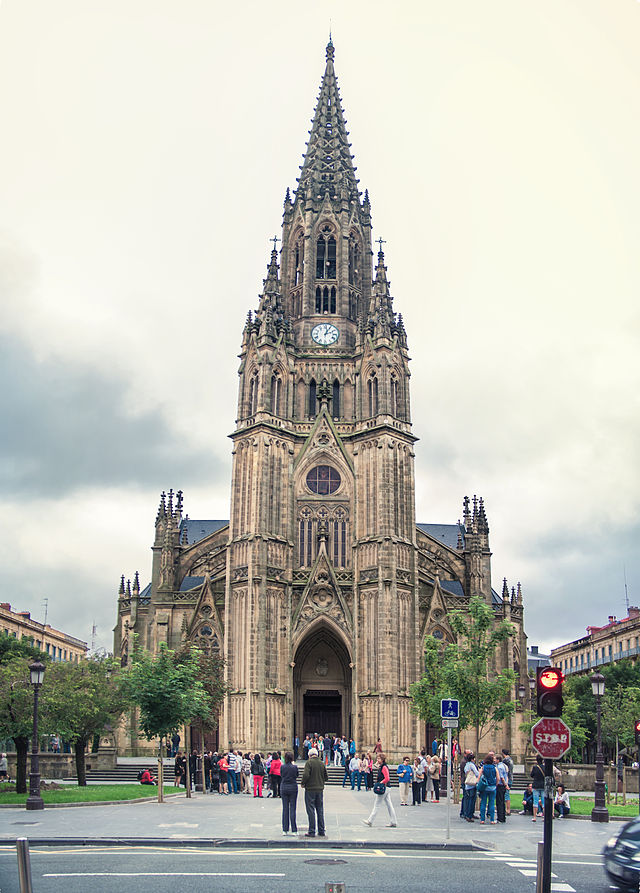
The Cathedral of the Good Shepherd of San Sebastián (Guipúzcoa, Basque Country, Spain) is the seat of the Diocese of San Sebastián, belonging to the Archdiocese of Pamplona. The most notorious religious building in the capital of Gipuzkoa, endowed with a pronounced verticality, and the largest in Guipúzcoa, its construction took place in the late nineteenth century in a neo-Gothic historicist style. Since 1953 he holds the rank of cathedral.
TOP 9:
Cathedral of Santiago de Bilbao
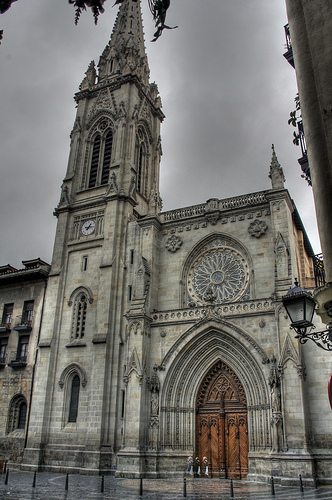
The Basilica Cathedral of Santiago in Bilbao (Biscay, Basque Country, Spain) is the Catholic temple that since 1949 houses the headquarters of the Diocese of Bilbao. It was built between the last quarter of the 14th century and the beginning of the 16th in the Gothic style, although its facade and tower are the result of a deep reconstruction undertaken in the 19th century in the neo-Gothic style. The Cathedral takes its name from the patron of Bilbao, the Apostle Santiago el Mayor, in relation to the passage through the city of a coastal branch of the Camino de Santiago. It is the most monumental Gothic church in Biscay and also serves as a parish. In 1819 he obtained the rank of Basilica Minor, being the first church to obtain this title in the Basque Country.
TOP 8:
Cathedral of Santa Maria de la Sede de Sevilla
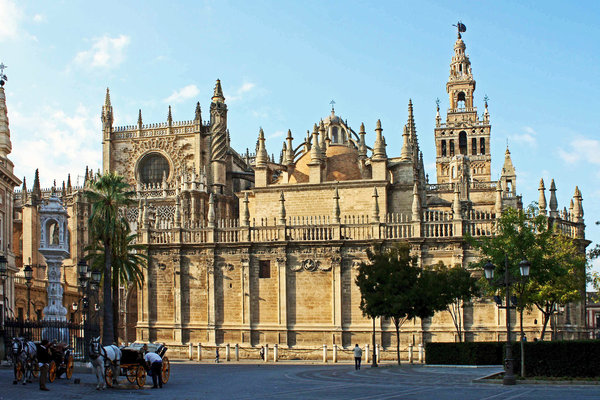
The Cathedral of Santa Maria de la Sede in Seville is the Christian Gothic cathedral with the largest area in the world. Unesco declared it in 1987, together with the Real Alcazar and the Archive of the Indies, a World Heritage Site and, on July 25, 2010, an Asset of Outstanding Universal Value. According to tradition, construction began in 1401, although there is no documentary record of the beginning of work until 1433. The building was carried out on the site that was left after the demolition of the old Aljama Mosque in Seville, 5 of which are preserved the minaret (the Giralda) and the Patio de los Naranjos.
TOP 7:
Granada Cathedral
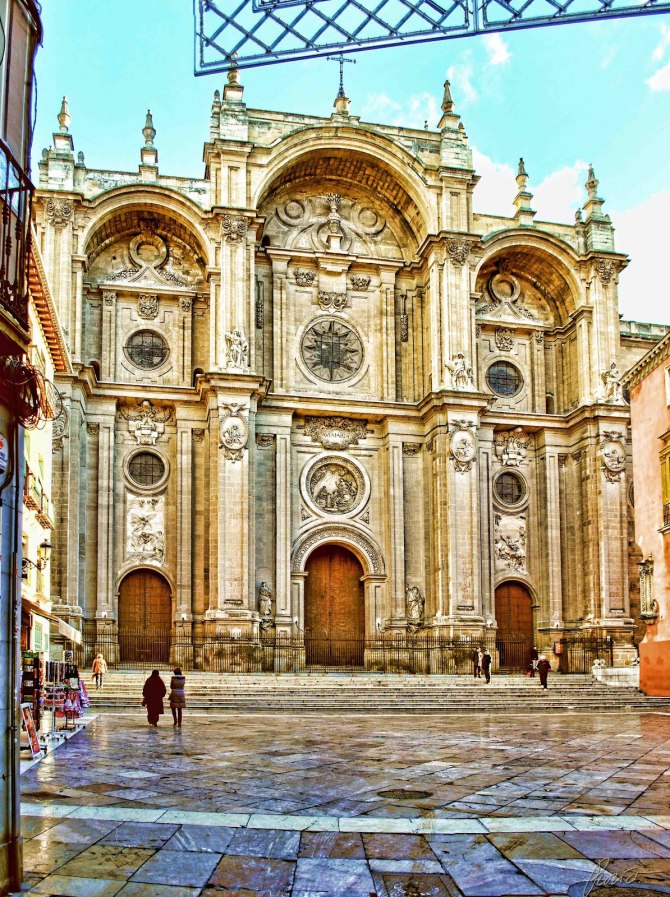
The Holy Metropolitan Cathedral Church of the Incarnation of Granada is a Catholic temple in the Spanish city of Granada, home of the city's archdiocese. The temple is one of the peak works of the Spanish Renaissance.
TOP 6:
the Cathedral of Santiago of Compostela
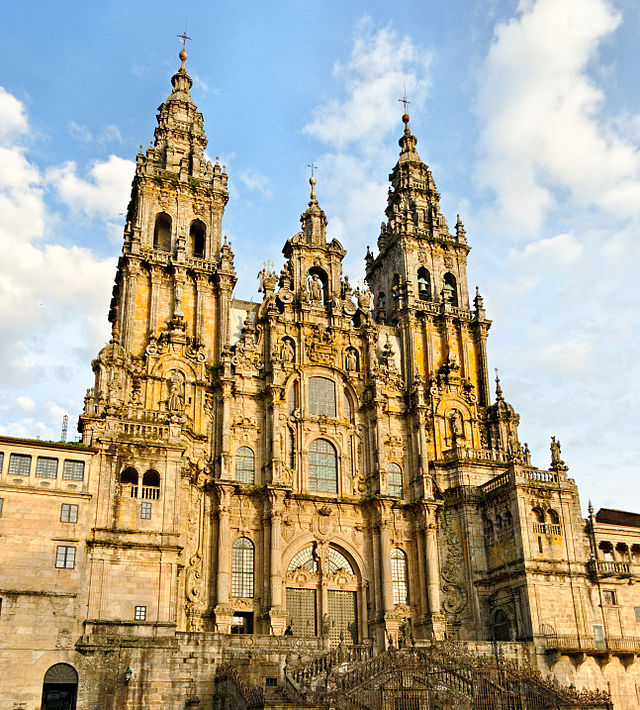
The Cathedral of Santiago de Compostela is a temple of Catholic worship located in the homonymous city, in the center of the province of La Coruña, in Galicia (Spain). It welcomes what, according to tradition, is the tomb of the Apostle Santiago, which made the temple one of the main pilgrimage destinations in Europe during the Middle Ages through the so-called Camino de Santiago, an initiatory route that followed the wake of the Milky Way communicating the Iberian peninsula with the rest of the continent. This was decisive for the medieval Hispanic kingdoms to participate in the cultural movements of the time; At present it is still an important pilgrimage destination. A privilege granted in 1122 by Pope Calixto II declared that they would be "Holy Year" or "Jubilee Year" in Compostela all the years on which July 25, the day of Santiago, coincided on Sunday; this privilege was confirmed by Pope Alexander III in his bull Regis aeterni in 1179. It was declared a Site of Cultural Interest in 1896, and the old city of Santiago de Compostela, which is concentrated around the cathedral, was declared a cultural heritage of Humanity for Unesco in 1985.
TOP 5:
Burgos cathedral
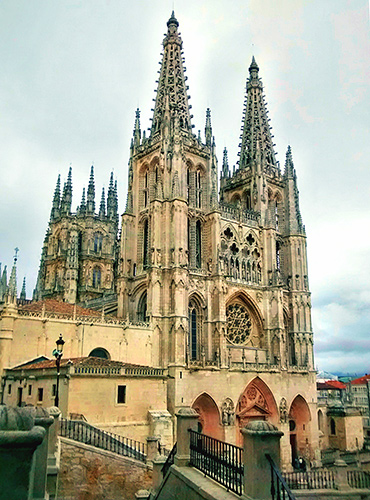
The Cathedral of Santa María de Burgos is a Catholic temple dedicated to the Virgin Mary located in the Spanish city of Burgos. Its official name is Santa Catedral Catedral Metropolitana Basilica de Santa María de Burgos. Its construction began in 1221, following French Gothic patterns. It had very important modifications in the fifteenth and sixteenth centuries: the needles of the main facade, the Condestable Chapel and the dome of the cruise, elements of the advanced Gothic that give the temple its unmistakable profile. The last important works (the Sacristy or the Chapel of Santa Tecla) belong to the 18th century, a century in which the Gothic covers of the main facade were also modified. The style of the cathedral is Gothic, although it has, in its interior, several Renaissance and Baroque decorative elements. The construction and remodeling were done with limestone extracted from the quarries of the nearby Burgos town of Hontoria de la Cantera.
TOP 4:
Mosque-Cathedral of Cordoba
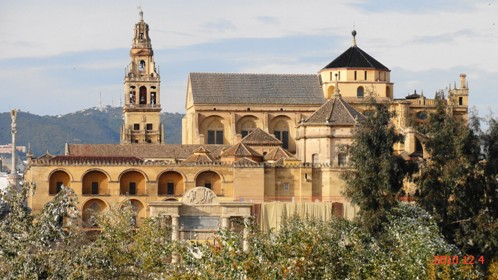
The Mosque-Cathedral of Córdoba, formerly «Santa María Madre de Dios» or «Great Mosque of Córdoba», currently known as the Cathedral of the Assumption of Our Lady in an ecclesiastical way, or simply Mezquita de Córdoba in general, is a building from the city of Córdoba, Spain. It is one of the most important monuments of Islamic architecture in Spain, as well as the most emblematic example of Spanish-Muslim Umayyad art. From the thirteenth century to the present it is a Catholic temple, the cathedral church of the diocese of Córdoba. It is declared Cultural Heritage of Humanity as part of the historical center of the city.
TOP 3:
Guadix Cathedral
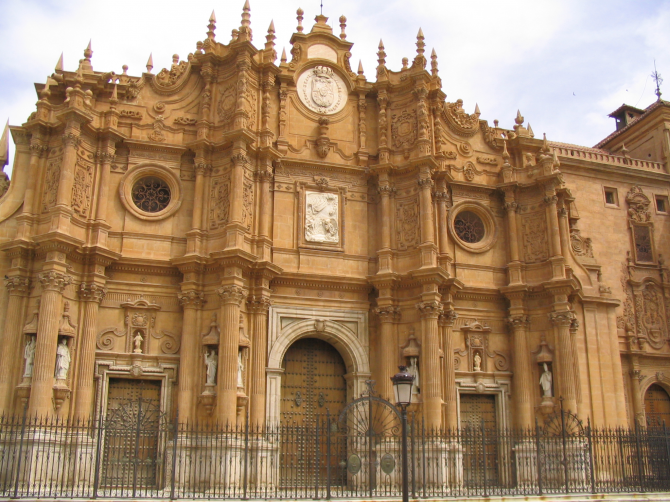
The Cathedral of the Incarnation of Guadix is a cathedral temple of Catholic worship, located in the city of Guadix, province of Granada, Spain. Its construction began in the sixteenth century and ended in the mid-eighteenth century. It is Baroque style.
TOP 2:
León Cathedral (Spain)
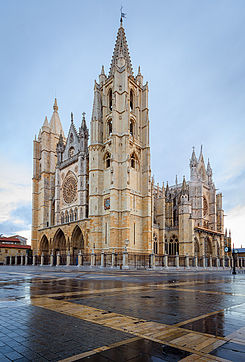
The Cathedral of León is a temple of Catholic worship, episcopal seat of the diocese of León, Spain, consecrated under the invocation of Santa María de Regla. It was the first monument declared in Spain by Royal Order of August 28, 1844 (confirmed by Royal Order of September 24, 1845). Started in the 13th century, it is one of the great works of the Gothic style, of French influence. Known with the nickname of Pulchra leonina, which means 'the beautiful Leonesa'. It is located on the Camino de Santiago. The cathedral of León is known above all for taking to the extreme the "dematerialization" of Gothic art, that is, the reduction of the walls to their minimum expression to be replaced by colored stained glass, constituting one of the largest collections of medieval stained glass in the world .
TOP 1:
Cathedral of the Assumption of Jaén
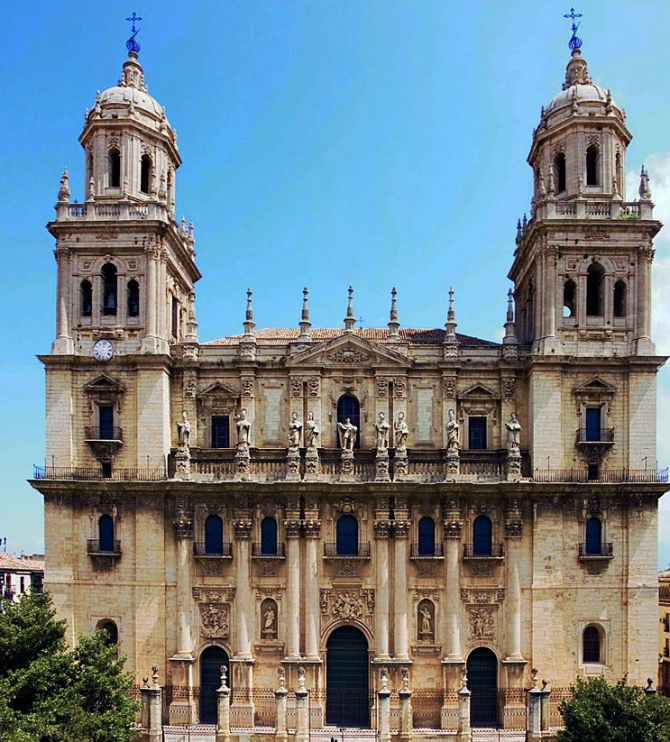
The Holy Cathedral Church of the Assumption of the Virgin is the Renaissance cathedral of Jaén, seat of the bishopric of Jaén, in the autonomous community of Andalusia, Spain. It is located in the Plaza de Santa María, in front of the Municipal Palace and the Episcopal Palace. The current cathedral was conceived in the 16th century to replace the previous Gothic temple of the 15th century. The construction lasted for several centuries, despite which the original idea remained intact. They emphasize the chapter room and the sacristy, which are the top work of Andrés de Vandelvira, and one of the most important works of the Spanish Renaissance. Its main facade is also outstanding, one of the main works of the Spanish baroque, built after the consecration of the temple in 1660. Likewise, the neoclassical choir stands out due to its beauty and the large number of seats that make it one of the largest from Spain. Once the building works were finished, they continued in the following centuries mainly in interior decoration and chapels. In addition, as a result of the Lisbon earthquake of 1755, consolidation works on the north facade were necessary, as well as the construction of the Church of the Tabernacle.


